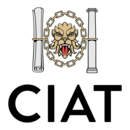Smart window coating
Researchers at the University of Oxford have collaborated with industry experts to develop an adaptable smart window technology that could reduce the energy usage of an average home by up to a third.
The new glass has a spectrally tuneable low-emissivity coating that uses a phase change material to control the amount of heat that comes into the room from the window, without affecting the quality of the light.
The thermal energy from the sun's infrared rays is absorbed by the glass and re-emitted as heat – either used to warm the room using transparent electrical heaters in the glass, substrate or reflected away to cool the room.
Dr Nathan Youngblood, formerly at Oxford and now at the University of Pittsburgh, said: "These windows can change according to seasonal needs. They absorb near infrared-light from the sun in the winter and turn it into heat for the inside of a building. In the summer months, the sun can be reflected instead of absorbed."
Working as part of the Wearable and Flexible Technologies Collaboration (WAFT), the project team proposed the heat-activated coating that could 'switch' in line with heating, cooling, and lighting demands.
The team built a prototype with an active chalcogenide-based phase change material so the new glass can adapt to the temperature, to save energy. When it is cold, the infrared rays from the sunlight are harvested and transformed into building heat to cut heating costs. If it is warm, the new glass can switch state to reflect the heat and reduce the need for air conditioning.
The active phase change material is adjustable – for example, 30% of the material is turning away heat while 70% is absorbing and emitting it – for more precise temperature control.
"Importantly, visible light is transmitted almost identically in both states, so you wouldn't notice the change in the window," Dr Youngblood said. "That aesthetic consideration is critical for the adoption of green technologies."
In comparison, the low-emissivity glass or low-E glass used in today's double-glazed homes and offices is inert. A nano-thin metallic reflective coating reflects the UV and infrared waves in sunlight to reduce heat transfer through the glass. Although the principle of reflecting heat when temperatures are warmer and retaining room heat when it is colder outside is the same as the new technology, low-E glass is not as responsive, the University of Oxford claims.
The thermal and optical properties of current windows are ‘set’ into glass coating as part of the manufacturing process – so the only real adjustment for local climate conditions is the choice of coating. Glass with a higher reflectivity property or a solar control coating lets in noticeably less natural light and vice versa, the university asserts.
The researchers estimate that using windows fitted with the new prototype glass – including the energy required to control the film – would save 20 to 34% in energy usage annually compared to double-glazed windows typically found in homes.
Harish Bhaskaran, professor at Oxford's Department of Materials, who led the research and the WAFT consortium, said: "Although significant future research is necessary before this technology can be commercialised, the results show that the concept is very promising and with further research can achieve very good efficiencies."
This article originally appeared as ‘New 'smart' window coating could help heat or cool homes’ on the CIAT website on 14 February 2022.
--CIAT
[edit] Related articles on Designing Buildings
Featured articles and news
RTPI leader to become new CIOB Chief Executive Officer
Dr Victoria Hills MRTPI, FICE to take over after Caroline Gumble’s departure.
Social and affordable housing, a long term plan for delivery
The “Delivering a Decade of Renewal for Social and Affordable Housing” strategy sets out future path.
A change to adoptive architecture
Effects of global weather warming on architectural detailing, material choice and human interaction.
The proposed publicly owned and backed subsidiary of Homes England, to facilitate new homes.
How big is the problem and what can we do to mitigate the effects?
Overheating guidance and tools for building designers
A number of cool guides to help with the heat.
The UK's Modern Industrial Strategy: A 10 year plan
Previous consultation criticism, current key elements and general support with some persisting reservations.
Building Safety Regulator reforms
New roles, new staff and a new fast track service pave the way for a single construction regulator.
Architectural Technologist CPDs and Communications
CIAT CPD… and how you can do it!
Cooling centres and cool spaces
Managing extreme heat in cities by directing the public to places for heat stress relief and water sources.
Winter gardens: A brief history and warm variations
Extending the season with glass in different forms and terms.
Restoring Great Yarmouth's Winter Gardens
Transforming one of the least sustainable constructions imaginable.
Construction Skills Mission Board launch sector drive
Newly formed government and industry collaboration set strategy for recruiting an additional 100,000 construction workers a year.
New Architects Code comes into effect in September 2025
ARB Architects Code of Conduct and Practice available with ongoing consultation regarding guidance.
Welsh Skills Body (Medr) launches ambitious plan
The new skills body brings together funding and regulation of tertiary education and research for the devolved nation.
Paul Gandy FCIOB announced as next CIOB President
Former Tilbury Douglas CEO takes helm.
UK Infrastructure: A 10 Year Strategy. In brief with reactions
With the National Infrastructure and Service Transformation Authority (NISTA).























